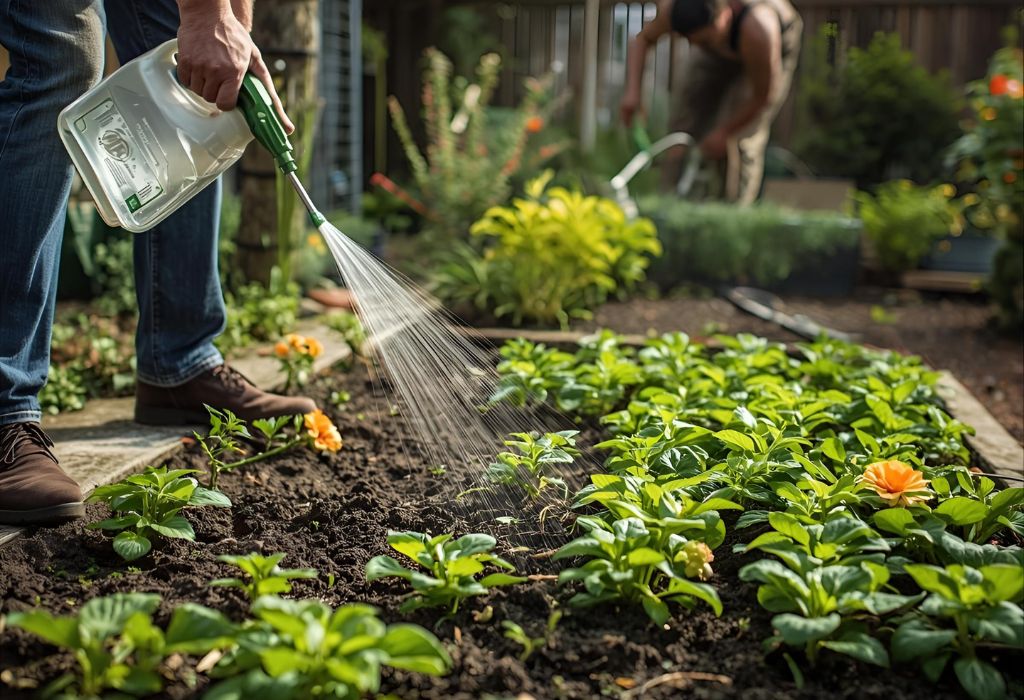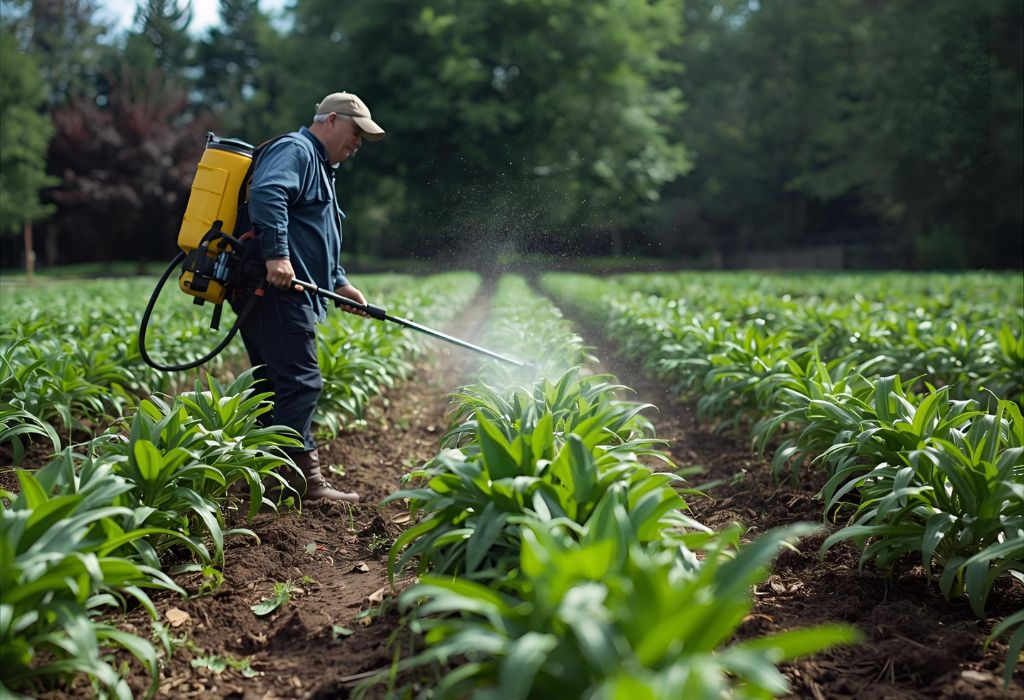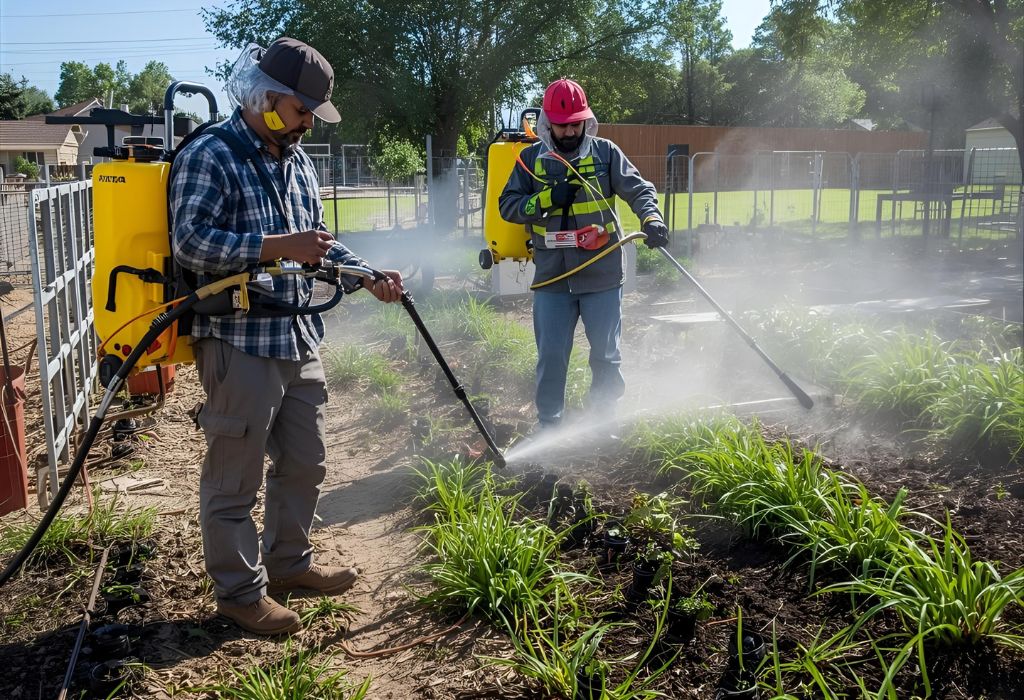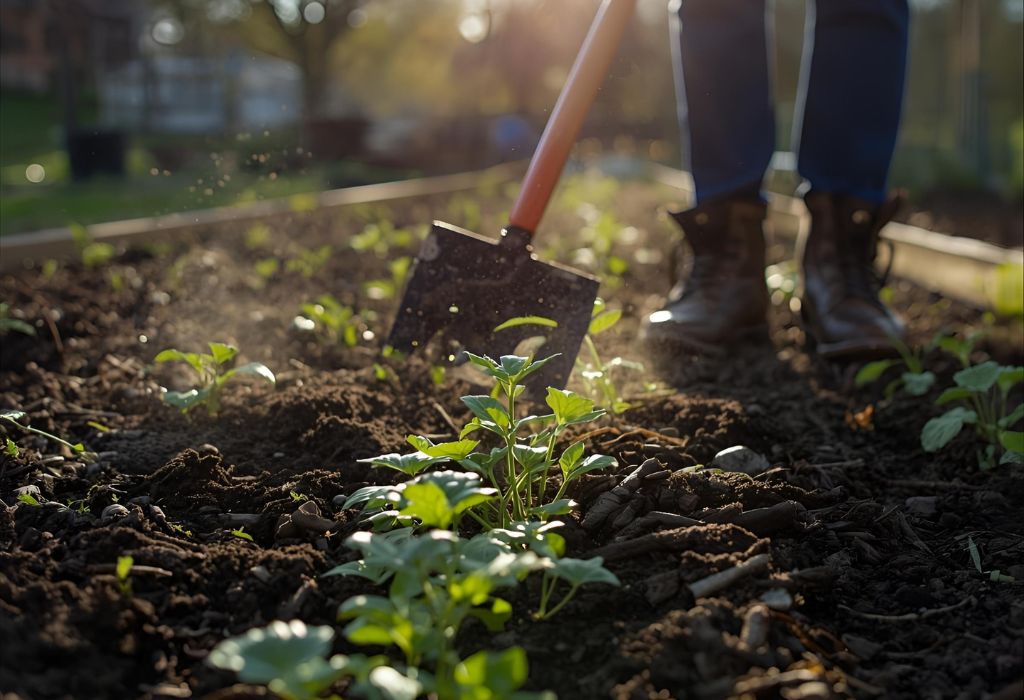You clear a patch of soil, ready to plant fresh vegetables or flowers, only to find weeds taking over the space. Pulling them one by one feels endless, and the thought of spraying weed killer seems like the fastest solution.
But a question arises: can you spray weed killer in the garden before planting, and if so, will your new plants be safe?
Many gardeners wonder how long to wait after spraying before seeds or seedlings can go into the ground.
Weed killers can be effective, but they are not without risk. Spraying too soon before planting can harm delicate seedlings, reduce soil health, or leave residues that affect crop growth.
Chemical herbicides like glyphosate are widely used, with over 280 million pounds applied each year in U.S. agriculture 【source: https://www.epa.gov】.
While they are powerful, timing and application methods matter to avoid unintended consequences in a home garden.
Natural alternatives such as mulching, solarization, or vinegar sprays are also gaining popularity.
These options may require more effort but can reduce chemical exposure for families, pets, and beneficial soil organisms.
The key is understanding both the benefits and risks of spraying weed killer before planting. By learning the right waiting periods, safe practices, and natural substitutes, gardeners can make informed decisions.
This guide explores whether spraying weed killer before planting is safe, how long to wait, and what eco-friendly options exist for preparing a weed-free garden bed.
Why Gardeners Use Weed Killer Before Planting

Spraying weed killer before planting creates a clean seedbed. It reduces competition so new plants can establish roots more easily.
Weeds compete with seedlings for sunlight, water, and nutrients. Eliminating them beforehand improves crop survival and growth.
Weed killers are especially appealing for large garden plots. Manual weeding in these spaces takes significant time and effort.
Many commercial farmers rely on pre-plant herbicides to save labor and maintain productivity. Home gardeners often adopt the same practices.
Why use weed killer before planting?
To remove weeds and give new plants a better start.
Is it necessary in all gardens?
No, some gardeners manage weeds with hand-pulling or mulch.
Does it save time?
Yes, it reduces weed pressure at planting time.
Do commercial farmers do this?
Yes, it is a standard pre-planting practice.
Types of Weed Killers Used Before Planting
Contact herbicides kill only the visible leaves of weeds. They are fast-acting but rarely affect the roots.
Systemic herbicides like glyphosate travel through the plant and kill roots. They are more effective for long-term control.
Pre-emergent herbicides stop weed seeds from sprouting. These must be applied weeks before planting and are less common in home gardens.
Natural alternatives include vinegar sprays, boiling water, or flame weeding. These offer eco-friendly solutions with less residue.
Which weed killer is most common?
Glyphosate-based herbicides are widely used.
What is a pre-emergent herbicide?
It prevents weed seeds from germinating.
Is vinegar a weed killer?
Yes, but it mostly burns weed leaves.
Are natural options safer?
Yes, but they usually need more frequent application.
How Long After Spraying Weed Killer Can You Plant?
The waiting time depends on the type of herbicide used. Glyphosate typically requires 3–7 days before planting.
Pre-emergent herbicides often need weeks or even months to break down. Planting too soon may prevent seeds from sprouting.
Organic sprays like vinegar or clove oil act quickly and leave little residue. In most cases, planting can resume after 24–48 hours.
Always check product labels for specific waiting periods. Manufacturers provide crop-safe guidelines for each formula.
How long after glyphosate can I plant?
Usually 3–7 days, depending on conditions.
Can I plant seeds right after spraying?
No, herbicide residues may interfere with germination.
What about vegetables?
Follow label instructions carefully for edible crops.
Do natural sprays need waiting?
Often only 1–2 days are necessary.
Risks of Spraying Weed Killer Before Planting

Herbicide residues can harm young seedlings if planting is done too soon. This risk is higher for sensitive vegetable crops.
Chemical weed killers may also reduce soil microbial activity. Healthy microbes are essential for nutrient cycling and plant growth.
Drift from spraying can damage nearby plants or flowers. Even small amounts of spray may cause leaf burn.
Long-term overuse of chemicals may lead to soil imbalances. Responsible use is important for sustainable gardening.
Can weed killer kill my crops?
Yes, if planted too soon after application.
Does glyphosate stay in soil long?
It usually breaks down in days to weeks.
Can weed killers harm earthworms?
Some studies suggest negative effects on soil organisms.
Will drift affect flowers?
Yes, spray drift can damage nearby plants.
Natural Alternatives to Spraying Before Planting
Mulching with straw, wood chips, or cardboard smothers weeds. It prevents light from reaching the soil surface.
Soil solarization uses clear plastic sheets to trap heat. The high temperature kills weed seeds and pathogens.
Homemade sprays using vinegar or salt can burn young weeds. They are non-selective, so apply with care.
Manual weeding remains reliable, especially for small gardens. Though labor-intensive, it avoids chemical exposure.
Does mulching stop weeds?
Yes, it blocks light and prevents growth.
What is solarization?
Covering soil with clear plastic to heat-kill weeds.
Is vinegar effective?
Yes, but mainly on small, shallow weeds.
Is hand weeding still best?
Yes, especially for deep-rooted weeds.
Best Practices for Spraying Weed Killer Before Planting

Always follow the instructions on herbicide labels. Each product has specific waiting times and safety guidelines.
Apply on calm, sunny days to prevent spray drift. Wind can spread chemicals to nearby plants.
Protect yourself with gloves, long sleeves, and goggles. Contact with herbicides may irritate skin or eyes.
Keep children and pets away from treated areas until sprays have dried completely. Safety should be the first priority.
Do I need gloves and masks?
Yes, protective equipment is essential.
Can I spray on windy days?
No, drift is too risky.
Is early morning spraying best?
Yes, it improves absorption and reduces evaporation.
Should pets avoid treated areas?
Yes, until the surface is fully dry.
Weed Control Before Planting Without Chemicals

Raised beds reduce weed pressure by limiting exposed soil. They are ideal for intensive gardening.
Cover crops such as clover or rye smother weeds naturally. They also enrich soil with organic matter.
Rototilling quickly removes existing weeds. However, it may also bring buried weed seeds to the surface.
Layering compost suppresses weeds while improving soil fertility. A thick layer also protects young seedlings.
Do raised beds reduce weeds?
Yes, they limit weed invasion.
Can cover crops help?
Yes, they compete with weeds and improve soil.
Is rototilling effective?
Yes, but it can also expose new weed seeds.
Does composting suppress weeds?
Yes, when applied in thick layers.
Long-Term Strategies for Weed-Free Planting Beds
Crop rotation disrupts weed life cycles. It prevents the same weeds from dominating each year.
Consistent mulching maintains a weed barrier throughout the season. Refresh mulch layers regularly.
Drip irrigation favors crops over weeds by directing water precisely. Overhead watering often helps weeds grow.
Regular monitoring prevents weed outbreaks. Spot treatments are easier than tackling full invasions.
Why does crop rotation help?
It breaks weed and pest cycles.
Does mulch need replacing?
Yes, each season or as it decomposes.
Why is drip irrigation better?
It reduces water for weeds.
Is prevention easier than control?
Yes, consistent maintenance avoids bigger problems.
Conclusion
Spraying weed killer before planting can be effective, but timing is critical. Planting too soon after spraying risks damaging seedlings.
Glyphosate-based herbicides usually require a 3–7 day waiting period. Natural sprays often need only 1–2 days before planting.
Safer alternatives such as mulching, solarization, or hand weeding reduce chemical use. These methods protect soil health and nearby plants.
For anyone asking, “can you spray weed killer in garden before planting,” the answer is yes — but only with proper timing, safety, and awareness of alternatives.
I’m Maya L. Greenwood, a lifelong plant lover who believes anyone can grow something beautiful with the right guidance. After years of testing soil mixes, pruning methods, irrigation tricks, and pest-safe solutions, I started EasyGardenTips.com to turn hard-won lessons into step-by-step advice. From seed starting and container gardens to composting and seasonal checklists, my goal is to make gardening simple, sustainable, and fun.
